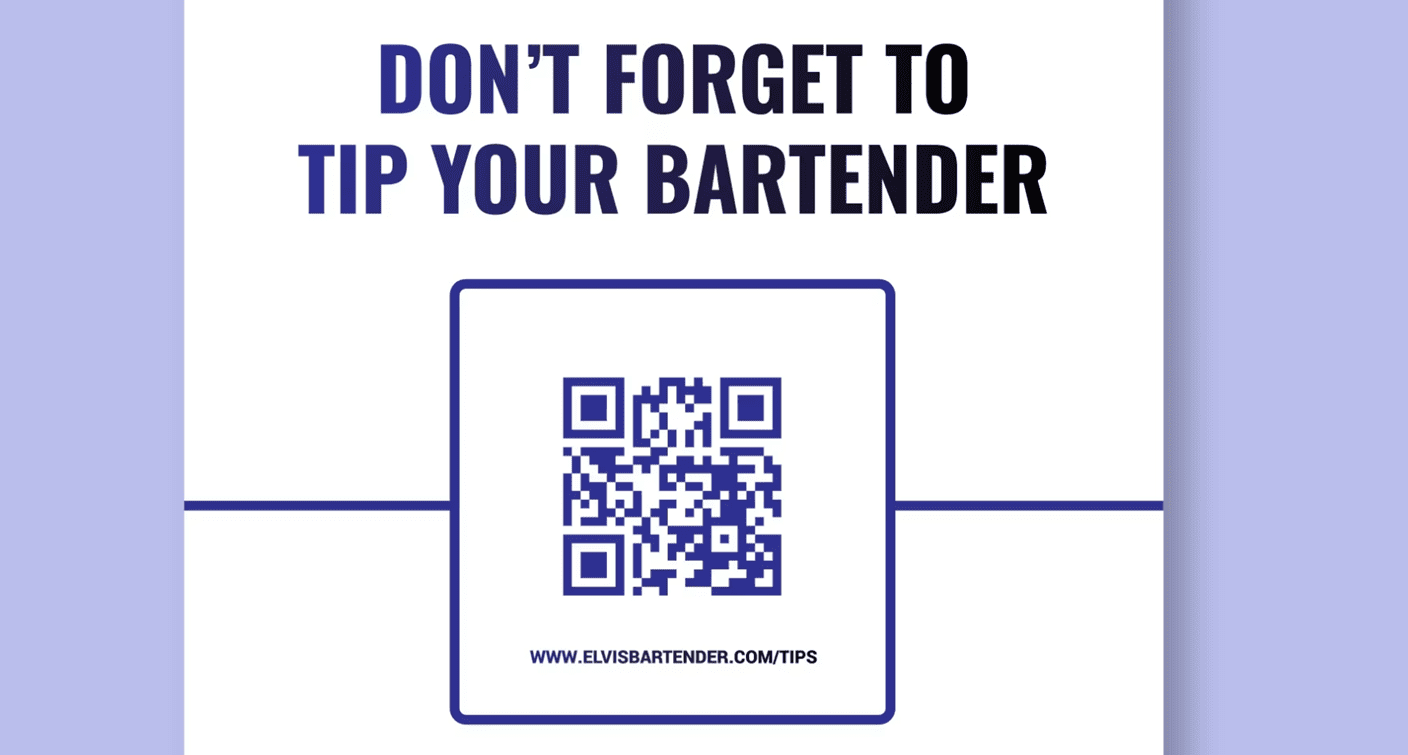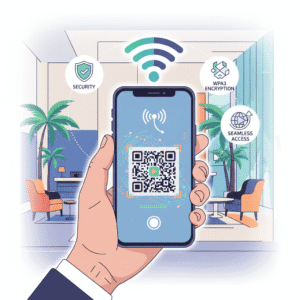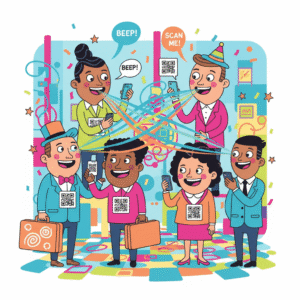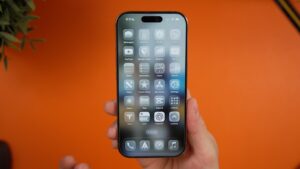The COVID-19 pandemic accelerated the adoption of contactless solutions, making QR codes essential tools for safe, efficient networking. What started as a health necessity has evolved into a preferred method of sharing professional information, with over 70% of professionals now favoring digital over paper cards. This shift represents more than just technological advancement; it’s a fundamental change in how we approach professional relationships and information sharing.
The Evolution of Business Networking
Traditional business cards have served professionals for decades, but they come with significant limitations. Paper cards get lost, become outdated quickly, and often end up in the trash. In contrast, QR code business cards offer a seamless, instant, and environmentally friendly alternative that addresses these challenges while providing enhanced functionality that paper simply cannot match.

The rise of smartphone adoption and improved QR code scanning capabilities have made this technology universally accessible. Modern smartphones come with built-in QR code scanners, eliminating the need for additional apps and making the scanning process effortless for recipients. This widespread accessibility has been crucial in driving adoption across all age groups and industries.
Key Benefits of QR Code Apps for Networking
Instant Information Exchange
QR code business cards enable instant sharing of contact details with a simple scan. Recipients can save your information directly to their phone’s contacts without manual typing, eliminating errors and ensuring accuracy. This seamless process transforms networking from a cumbersome exchange to a smooth, professional interaction.
Dynamic and Always Current
Unlike static paper cards, QR codes can link to dynamic digital profiles that update in real-time. When you change jobs, phone numbers, or social media profiles, your digital business card automatically reflects these updates without requiring new prints or redistribution.
Enhanced Information Capacity
Traditional business cards are limited by physical space, but QR code cards can link to understanding digital profiles containing unlimited information. These profiles can include:
Complete contact information
Social media links
Portfolio samples
Company websites
Video introductions
Product catalogs
Calendar booking links
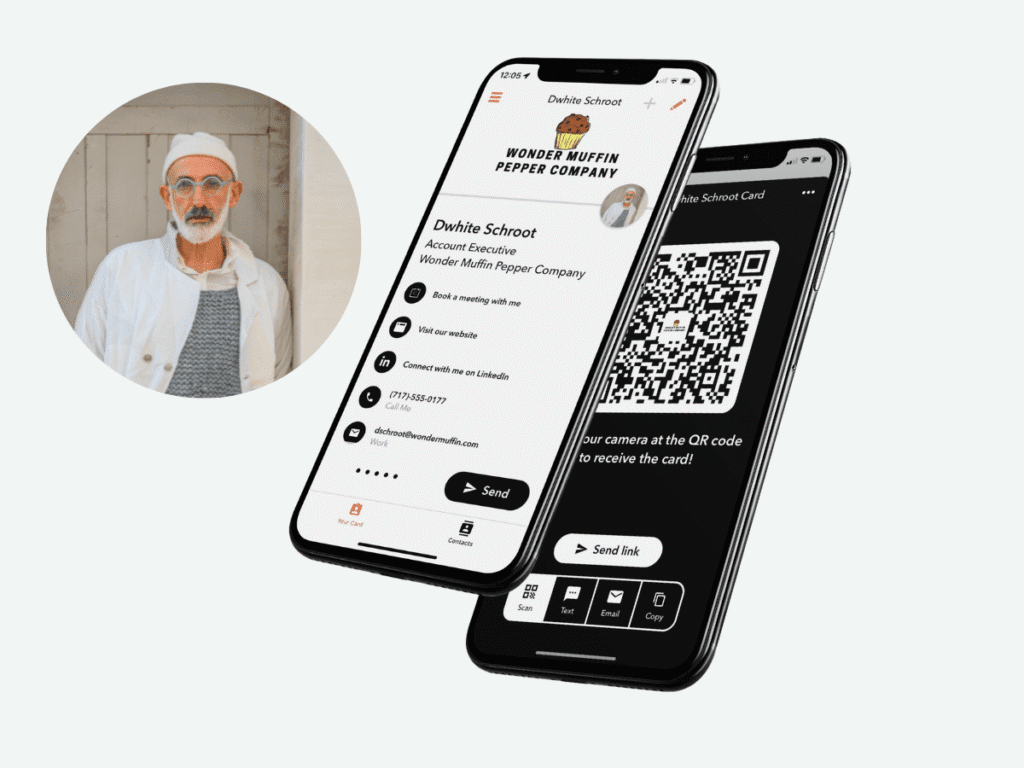
Environmental Sustainability
The environmental impact is significant: using digital business cards can save approximately 7 million trees annually by reducing the need for printed cards. This eco-friendly approach resonates particularly well with millennials, with 63% preferring digital over traditional business cards for their environmental benefits.
Cost Efficiency
68% of small businesses report cost savings on printing by switching to digital cards. The elimination of printing, shipping, and reprinting costs makes QR code business cards a financially attractive option for businesses of all sizes.
How QR Code Business Cards Work
The technology behind QR code business cards is elegantly simple yet powerful. When someone scans your QR code using their smartphone camera, they’re instantly directed to your digital business card or professional profile. This profile can be hosted on various platforms or apps, each offering different features and customization options.
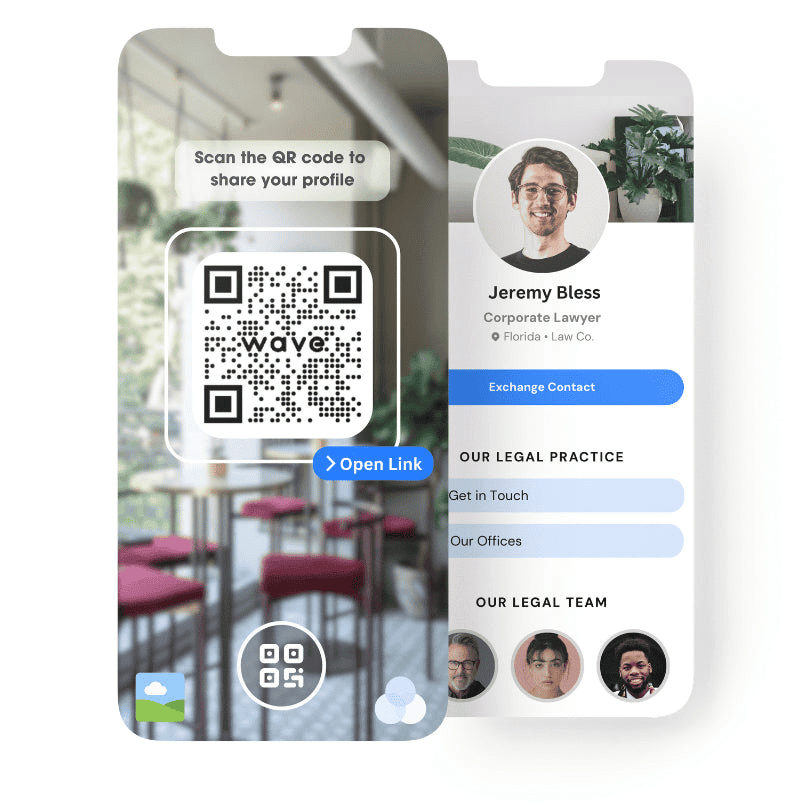
The Scanning Process
Display or share your QR code via app, printed card, or digital screen
Recipient scans the code using their phone’s camera
Instant access to your digital profile with all contact information
One-tap saving to contacts or connecting on professional platforms
Integration with Popular Apps
Modern QR code business card apps integrate with existing tools and platforms including:
CRM systems for automated lead capture
Email signatures for consistent professional branding
Social media platforms like LinkedIn for instant connections
Calendar applications for easy meeting scheduling
Essential Features of Modern QR Code Apps
Customizable Design Options
Leading QR code apps offer extensive customization features, allowing users to create branded QR codes with company logos and colors. This personalization ensures brand consistency while maintaining professional appearance.
Analytics and Tracking
Advanced analytics provide insights into networking effectiveness, tracking metrics such as:
Number of scans and views
Geographic location of interactions
Time-based engagement patterns
Follow-up conversion rates
These insights help professionals optimize their networking strategies and understand which events or approaches generate the most valuable connections.
Multi-Platform Sharing
Modern apps support various sharing methods beyond QR codes:
NFC technology for tap-to-share functionality
Text messages and email for remote sharing
Social media integration for broader reach
Apple Wallet and Google Pay integration for easy access
AI-Powered Features
Artificial intelligence is revolutionizing QR code apps with features like:
Automatic business card scanning and digitization
Smart contact management and organization
Intelligent follow-up suggestions based on interaction patterns
Market Trends and Industry Statistics
The digital business card market is experiencing unprecedented growth. Key statistics highlight the industry’s trajectory:
Digital business card usage has increased to 37% among businesses and 23% among individuals
72% of tech companies have adopted digital business cards compared to 35% in traditional industries
Digital business cards lead to a 35% improvement in follow-up rates compared to paper cards
19% higher engagement rate for digital cards with interactive QR code elements
Industry Adoption Patterns
Different industries are embracing QR code networking at varying rates:
Technology Sector: Leading adoption with 72% implementation rate
Professional Services: Moderate adoption at 45-50% implementation
Manufacturing: Growing interest with 35% current adoption
Healthcare: Rapid growth due to hygiene considerations
Best Practices for QR Code Networking
Design and Presentation
Ensure adequate contrast between QR code and background for easy scanning
Include a clear call-to-action like “Scan to Connect” or “Get My Digital Card”
Test your QR code regularly to ensure it works across different devices and lighting conditions
Content Strategy
Keep your digital profile updated with current information
Include relevant social proof such as testimonials or portfolio pieces
Optimize for mobile viewing since most scans happen on smartphones
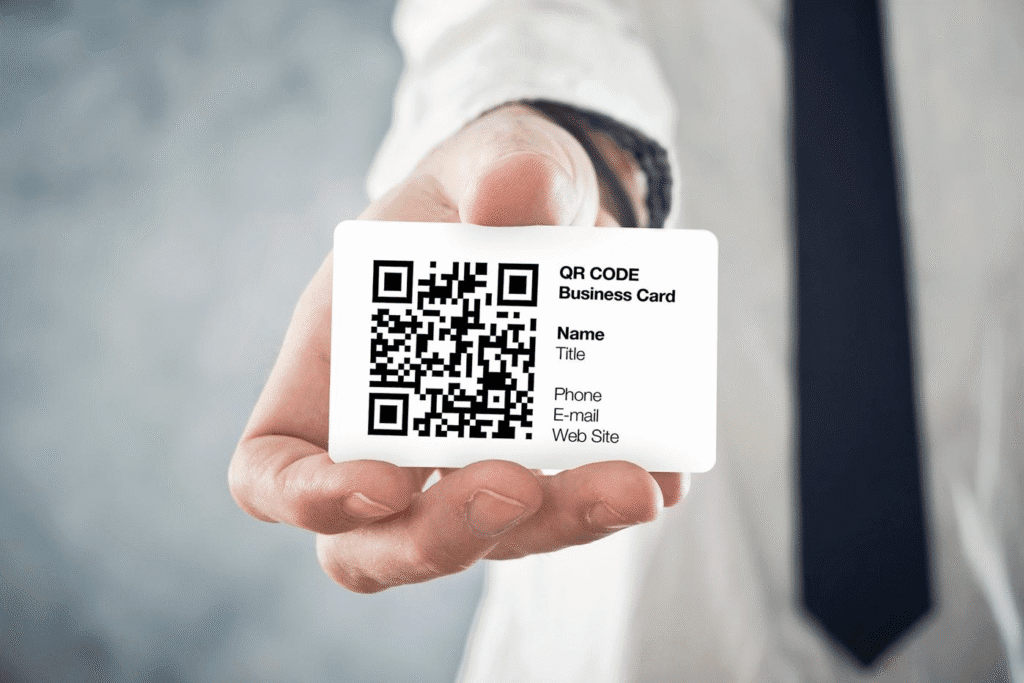
Event Integration
Display QR codes prominently on name badges, presentation slides, and marketing materials
Practice your elevator pitch for the time while people scan your code
Follow up promptly with new connections made through QR code exchanges
Security Considerations
Use reputable QR code apps with strong privacy policies
Regularly review and update privacy settings on your digital profiles
Be cautious about the information you include in publicly accessible profiles
The Technology Behind QR Code Apps
Static vs. Dynamic QR Codes
Understanding the difference between static and dynamic QR codes is crucial for effective networking:
Static QR Codes:
Information is embedded directly in the code
Cannot be updated once created
Suitable for permanent information like websites
Dynamic QR Codes:
Contain a short URL that redirects to your information
Can be updated without changing the code
Provide tracking and analytics capabilities
Preferred for business networking applications
Data Storage and Privacy
Modern QR code apps prioritize security with features including:
Local data storage on user devices
GDPR-compliant data handling for European users
Encrypted data transmission for secure information sharing
User-controlled privacy settings for selective information sharing
Successful Implementation Strategies
For Individual Professionals
Choose a comprehensive app that meets your specific networking needs
Create multiple profiles for different contexts (networking events, sales meetings, casual encounters)
Integrate QR codes into all touchpoints including email signatures, business cards, and social media profiles
Track performance metrics to optimize your networking approach
For Businesses and Teams
Establish company-wide standards for digital business card design and content
Provide training on effective QR code networking techniques
Integrate with existing CRM systems for seamless lead management
Monitor team networking performance through app analytics
Future Trends in Contactless Networking
Emerging Technologies
Several technologies are poised to further transform digital networking:
Augmented Reality (AR): 3D business cards and interactive experiences
Blockchain Integration: Verified professional credentials and secure networking
AI-Enhanced Networking: Smart matching and personalized connection recommendations
5G Connectivity: Faster, more reliable QR code scanning and profile loading
Integration with Professional Platforms
Deeper integration with professional networks like LinkedIn, Salesforce, and other business platforms will make QR code networking even more seamless and valuable for professional relationship building.
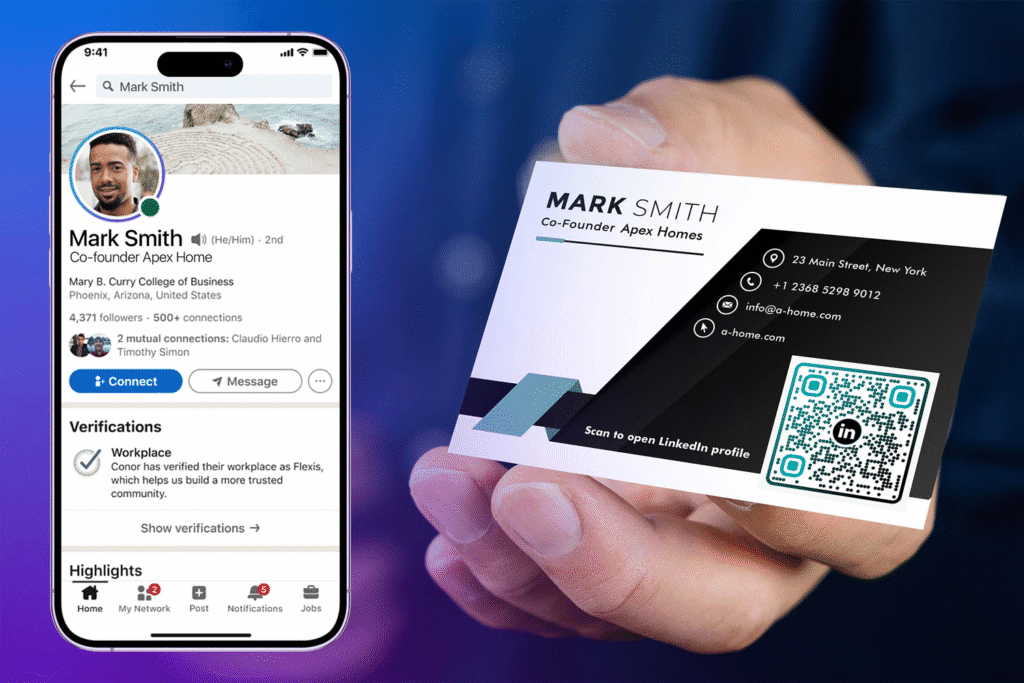
Sustainability Focus
As environmental consciousness grows, QR code business cards will become the standard for eco-conscious professionals and companies committed to sustainable practices.
Conclusion: Embracing the Digital Networking Revolution
The transition from traditional paper business cards to QR code-powered digital solutions represents a fundamental shift in professional networking. The benefits are clear: instant information exchange, cost savings, environmental sustainability, and enhanced professional image. With 63% of millennials already preferring digital cards and the market projected for continued explosive growth, adopting QR code networking technology is no longer optional—it’s essential for staying competitive in today’s business landscape.
For businesses developing QR code apps like QR Code Genie, the opportunity is immense. The combination of user-friendly interfaces, powerful analytics, and seamless integration capabilities positions QR code apps as indispensable tools for modern professionals. As we move forward, the question isn’t whether to adopt contactless business cards, but rather how quickly organizations can implement these solutions to stay ahead of the curve.
The future of networking is contactless, digital, and powered by QR technology. By embracing these tools today, professionals and businesses position themselves at the forefront of a networking revolution that’s transforming how we connect, share information, and build lasting professional relationships in our increasingly digital world.
